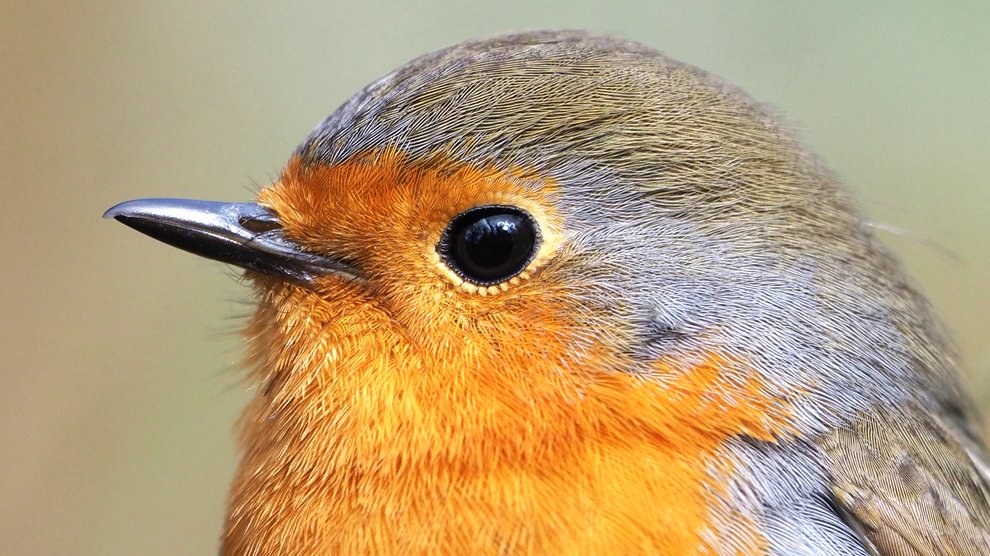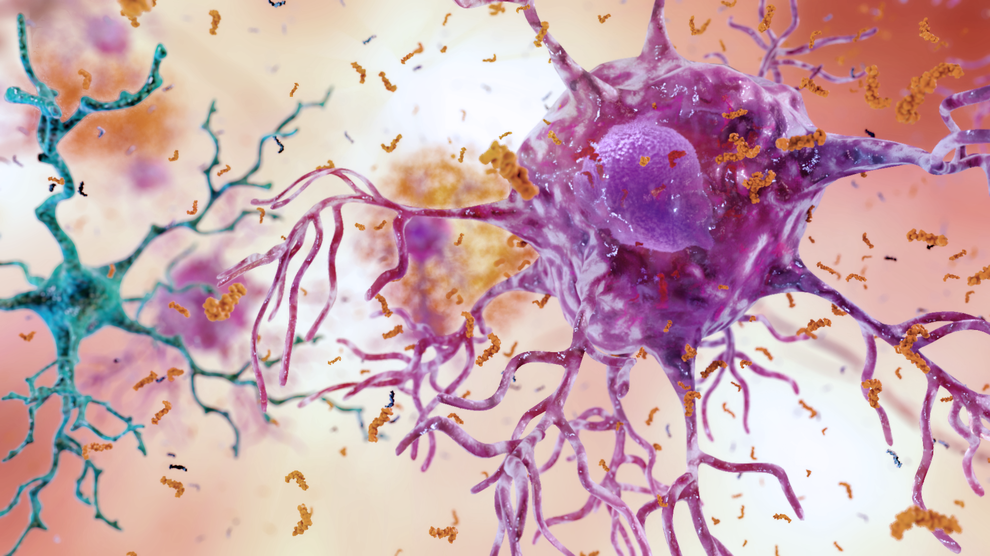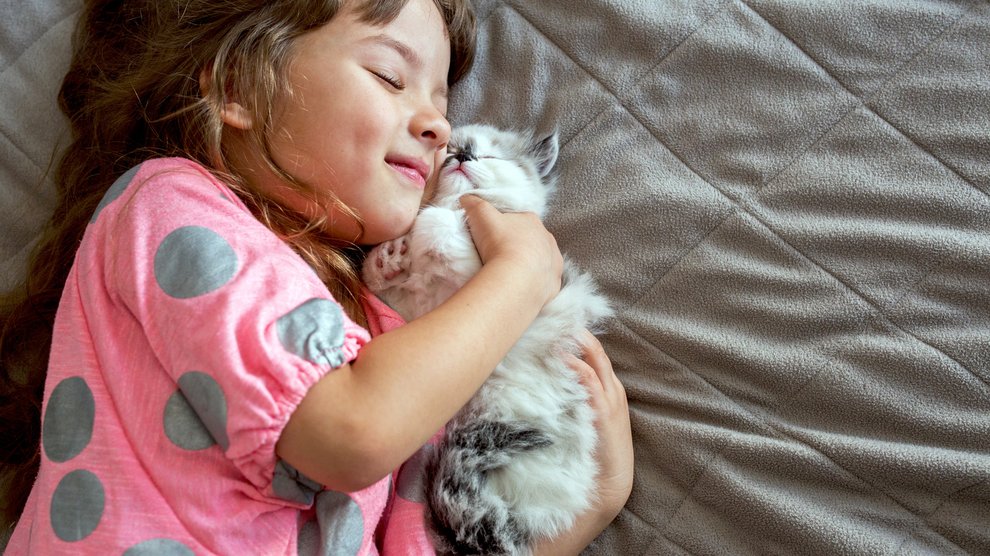The 10 most popular NOVA stories of 2019
We’ve counted down our ten most-read articles of 2019 and found that health and medicine, physics—and of course animals—were fan-favorite topics this year.

Depending on how you feel about squirrels, you might delight or despair to hear that we've got a lot in common with these woodland wunderkinds. Image Credit: Dgwildlife, iStock
10. FDA approves first major new depression treatment in decades
In March, the U.S. Food and Drug Administration approved a drug called esketamine, the first major new depression treatment to hit the market in decades. The drug is designed specifically for people suffering from the most extreme forms of treatment-resistant depression and is administered only in certified treatment centers via a nasal spray (rather than an oral pill). Esketamine is specifically for patients who have tried two other antidepressants with no success.
Janssen Research & Development, the developer of the drug, hopes that by targeting the neurotransmitter glutamate, esketamine can offer rapid antidepressant effects, much like its cousin ketamine does. Experts’ opinions on the new drug, however, are split.

The Milky Way's population of Cepheid stars suggests that our galaxy is a twisted disk. Image Credit: J. Skowron / OGLE / Astronomical Observatory, University of Warsaw
9. A new 3D map of the Milky Way flaunts our galaxy’s warped shape
If you ever thought the Milky Way was a flat, featureless pancake, think again. This summer, we learned that the Milky Way is bent out of shape. In fact, it seems to be warped into a wave much like a beach towel being shaken free of sand.
Finding definitive proof of the Milky Way’s warp was no simple task. While astronomers have gotten pretty good at snapshotting galaxies in more distant regions of the universe, here on Earth we don’t have the best vantage point to get a birds-eye view of the celestial structure that surrounds us: Just imagine trying to map a forest by being dropped down into its center.

Microwaving grapes is a surefire way to get your hands on some plasma—and an elevated risk of burning down your apartment.
Image Credit: Hamza K. Khattak, Trent University; PNAS
8. How does microwaving grapes create plumes of plasma?
If you’ve been tempted ever to create some plasma—and potentially burn down your home in the process—we learned this year that grapes and a microwave are the ticket.
Or, alternatively, you can turn to YouTube and (safely) watch researchers as they puzzle out the physics behind DIY plasma. Spoiler: The result is a swarm of subatomic particles that clash and collide, often emitting roiling blobs of light and heat that can resemble molten fire.

European robins make harrowing, cross-continental migrations to escape harsh winters. To guide their way, these birds and others may use quantum entanglement to "read" Earth's magnetic field. Image Credit: Frank Vassen, flickr
7. A bird’s eye view of quantum entanglement
Every year, billions of birds make harrowing, cross-continental migrations. But how do they know where to go?
Scientists have known for a while that Earth’s magnetic field lends a helping hand. But this year, some researchers gleaned insight into how, suggesting that at some point in history, avian evolution tapped into quantum mechanics.

An artistic three-dimensional representation cyclo[18]carbon, a ring of 18 carbon molecules. Image Credit: IBM Research
6. A new form of carbon is born—on a bed of salt
In August, a new molecule called cyclo[18]carbon officially joined the carbon club. The creation, imaging, and analysis of cyclo[18]carbon helped settle decades of debate on the structure and properties of the molecule, which some researchers doubted could even be stably made in a laboratory setting.
Historically, researchers’ attempts to generate cyclocarbons in the lab resulted in volatile gas, too ephemeral to rigorously study. But the recent breakthrough shows that cyclocarbons can be generated by pruning carbon and oxygen atoms off a more complex molecule at extremely cold temperatures. Starting with a molecule made up of 24 carbons linked to six oxygens, researchers at IBM Research and Oxford University were able to generate a final structure of 18 carbons—the smallest possible ring of carbons predicted to be stable by theoretical models.

A wild silver-backed chevrotain appeared! Image Credit: SIE/GWC/Leibniz-IZW/NCNP Copyright holder: Andrew Tilker
5. Feast your eyes on the first-ever photos of a silver-backed chevrotain in the wild
Once upon a time, there was a fanged, cat-sized deer-like creature with a glossy silver back. Then, like many legendary beasts, it was “lost to science.”
Until this November, that is. Though Western researchers have known about the skittish silver-backed chevrotain for more than a century, they’ve only managed to collect five specimens, all corpses obtained from hunters in Vietnam. The last of these appeared nearly three decades ago. But this year, with the help of local knowledge and a cluster of well-placed camera traps, Global Wildlife Conservation biologist Andrew Tilker and his team snapped the first-ever photos and videos of the silver-backed chevrotain in the wild.

As Alzheimer's disease progresses, communication between brain cells breaks down. New research suggests that one possible cause for this deterioration may be a brain infection by Porphyromonas gingivalis, a bacterium known for causing gum disease. Image Credit: National Institute on Aging/NIH, flickr
4. Could Alzheimer’s begin with bacteria that cause gum disease?
In individuals affected by Alzheimer’s disease, communication between brain cells breaks down over time. Early this year, a study suggested one peculiar potential cause for this deterioration: a brain infection by a bacterium known for causing gum disease.
In January, researchers reported that the bacterium, Porphyromonas gingivalis, might be capable of traversing the path from mouth to brain, where it can trigger chemical changes that damage cognitive function. These findings suggest that some cases of Alzheimer’s might have an infectious cause—and a new drug that blocks this process is now in clinical trials.

A complex tangle of social factors may encourage girls to prioritize verbal skills from a young age. But being excellent at reading doesn’t make a person bad at math—no matter their gender. Image Credit: Imgorthand, iStock
3. Girls’ superb verbal skills may contribute to the gender gap in math
Being excellent at reading doesn’t make a person bad at math—no matter their gender.
According to previous studies, including a meta-analysis that probed gender differences in recent studies of mathematics performance, girls are just as good at math as boys are. But a complex amalgam of social factors may encourage girls to prioritize verbal skills from a young age, a study published in July suggests.
Drawing on data from more than 300,000 high school students from 64 countries, the study found that because girls’ verbal skills outshine their already high marks in math, many who do every bit as well as their male peers in mathematics still choose more humanities-centric careers.
2. Six stupendous reasons to appreciate the heck out of squirrels
Beady eyes, bushy tails, can’t lose: We’re talking squirrels. And whether you love these nut-crazed rodents or not, there’s no denying that despite being zany, squirrels are also aerodynamic and brainy.
On January 21, for Squirrel Appreciation Day, NOVA published a roundup of six squirrel facts—and it quickly became a fan favorite. So if you’re still in the dark about squirrel-induced electrical power outages, squirrels eating spring rolls, the power of squirrel memory, and how squirrels can give investment bankers a run for their money, here’s your ticket out.

Now that's a purrfect pair. Image Credit: AkilinaWinner, iStock
1. Study finds kittens bond with their human caregivers like babies do
Sorry, dogs: You may not be humans’ only faithful companions. Though cats have their critics, it turns out that they can be extremely social with other felines and humans alike.
In September, researchers revealed that much like human infants, cats are “attached” to their caretakers (and like babies, felines have different ways of expressing their attachment). When analyzing humans, dogs, and cats, the research team found that roughly 60 percent of infants or pets are “secure,” meaning they appear to use their caregivers as a safe base from which to explore their surroundings. Of the felines that seemed, well, insecure, fewer acted aloof or avoidant than one might expect.



